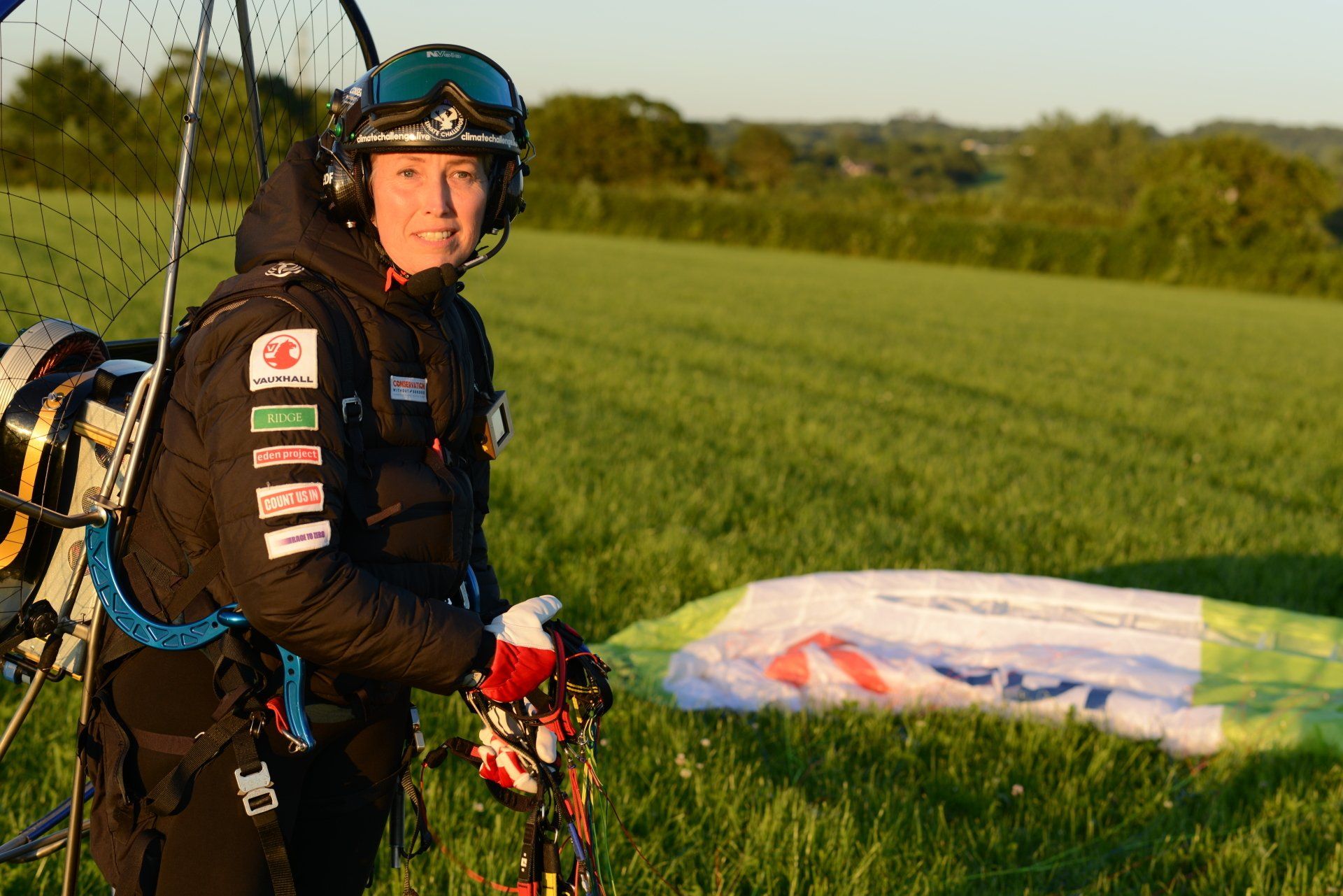Electric Paramotor: Saying No to the Impossible
Sacha Dench, known as the ‘human swan’ for her daring adventure following the migratory routes of swans in a paramotor from the Russian Arctic to the UK, is undertaking yet another ground-breaking expedition. This time, however, she is doing something that has never been done before. Using a specially-adapted green electric paramotor, Sacha will be flying the 3000+ km circumnavigation of Britain in a mode of transport that has never before been tested on long distance journeys.
‘The Human Swan’
Last year, her family home was destroyed in the Australian bushfires which made apparent the damage of climate change. Whilst it is easy to slip into despair, Sacha wanted to change the narrative to one of ambition, energy and enthusiasm for solutions. Sacha decided to embark on an unprecedented expedition around Britain, engaging people with the realities of the climate crisis and inspiring climate action.
The Round Britain Climate Challenge will see Sacha flying around our coastlines and landing to talk to some of Britain’s most inspiring individuals, communities and businesses ahead of COP26. Originally, Sacha had considered only going partially electric — a vague idea at best. Previously, Sacha has relied on a traditional two-stroke, petrol powered engine. In an expedition highlighting the urgency of the climate crisis, and aiming to inspire hope and action, it was important that Sacha was innovative herself in her mode of travel.
The Electric Paramotor
In a conversation with Nigel Topping, High Level Champion for Climate Action COP26, the challenge of going fully electric was floated. And Sacha, never one to back down from a challenge, made it happen. Wanting to rally the broad public, Sacha is aiming high — an apt metaphor. In the run up to COP26, it is important to show climate action; demonstrating ambitiousness and a shift in mentality beyond the UN event. That no one has yet attempted to fly long distance in an electric powered paramotor is both a nerve-wracking thought and a chance for us to break a Guinness World Record for the first and quickest circumnavigation around Britain on a newly adapted green electric paramotor. Not only will Sacha be the first to test the capability of electric flight but also attract attention to Britain’s innovative solutions to the climate crisis.
The first steps involved looking online for anyone and everyone who was involved in manufacturing electric motors. Coming across a few individuals and some crazy inventions (one powered by drones), Sacha needed a genius engineer who had actual demonstrations of a quality product with significant flight times. Yet, because of the recent influx of interest in electrification, there has been a shortage of lithium batteries as manufacturers prioritise larger buyers. This, combined with the delays of Brexit on borders and imports, and Covid-19 making training difficult, has delayed and made getting hold of the electric paramotor more challenging than expected.
The max airtime of the electric paramotor is 40-45 minutes, compared to traditional motors that can fly for up to 2-3 hours. Sacha will have to be landing near roads for the ground crew’s accessibility to replace the batteries. The electric paramotor is quieter than the traditional. With a higher pitch that doesn’t travel, people on the ground won’t be able to hear the engine. To maintain maximum efficiency, Sacha must maintain altitude, fly in a straight line, and optimise the exact RPM (revolutions per minute) to suit the speed. Opting for the largest battery that is practical, weighing 18kg, the paramotor weight does not differ much from the one used for Flight of the Swans. However, because it does not burn off fuel during the flight, it weighs the same amount on landing which requires strong leg muscles and extra training. The structure and frame of the paramotor remains largely the same. However, the propeller sits further out which makes for better propulsion and higher efficiency as the motor and Sacha’s body block less air flow.
The Future of Electric Travel
There has been little change in recent years in battery technology. Conservation Without Borders is hoping this expedition might inspire promising inventors out of the woodwork and re-energise the field.
In electric flight more generally, there are a lot of changes in the pipeline. Airbus, for example, is planning to fly a hydrogen powered aircraft to COP26 in November 2021, hoping the first zero-emissions aircraft will be in commercial use within the next 10 years. Furthermore, the average aircraft has a lifetime of thirty years and manufacturers are designing and building aircraft frames with capacity to be hydrogen powered suggesting a strong shift towards renewable energy. Neste is currently producing renewable fuels using synthetic materials, such as Neste MY Sustainable Aviation Fuel, that reduces greenhouse gas emissions by up to 80% compared to fossil fuels. The innovative solutions from aircraft and fuel manufacturers across the globe suggests a strong shift towards a greener future. We hope the Round Britain Climate Challenge will help to challenge public opinion and make shifts faster.
A lot of people told Sacha not to go electric; that it wasn’t possible. And yet, we are proving them wrong. This ambitious goal excites people and makes change happen. If Sacha can achieve the impossible, any individual, community or business can similarly aim high in the fight against climate change. Britain, in the last 150 years, has globally revolutionised the world with the industrial revolution. Why can’t we use the same mentality to trigger the green revolution?


